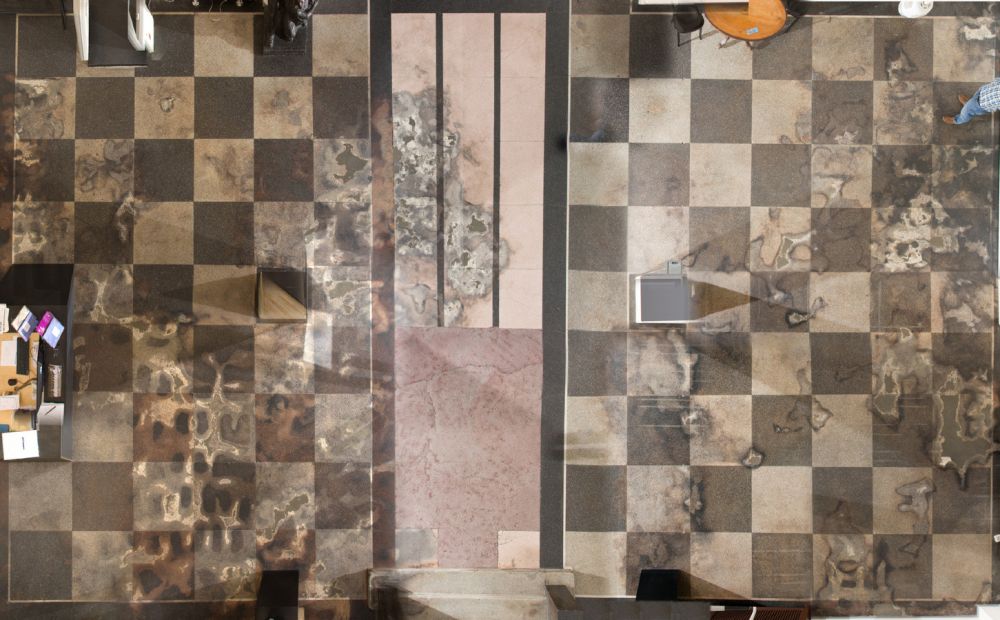- News
- Events
- Oneg Shabbat
- Collections
- Research
- Exhibitions
- Education
- Publishing Department
- Genealogy
- About the Institute
- Bookstore


Photo by Grzegorz Kwolek, JHI
On May 16, 1943, at 8:15 p.m., the commander of the German armed forces pacifying the Warsaw Ghetto Uprising blew up the Great Synagogue at Tłomackie, the most magnificent and beautiful synagogue in Poland. It was supposed to be a sign of the final annihilation of Jewish Warsaw.
The fire that broke out then spread to the neighboring building of the Main Judaic Library. After the war, the burned-out building was thoroughly renovated. As early as 1947, Jewish science and culture were revived there, but the traces of flames on the floor will always remind us of the Holocaust.
In 2016, we carried out the conservation of the historic floor. The terrazzo, from which the floor was made, has discolored in places exposed to high temperatures. Chips and cracks on the entire surface were also formed. After the war, the losses were filled with a gray-green mass that differed from the original batches, both in terms of color and texture. The presence of delaminations inside the floor structure was very easy to notice when walking through the central part of the hall. It was indicated by soft crackles and a gentle bending of the surface.
Conservation works were preceded by specialized petrographic research, determining the type, color and size of the original terrazzo aggregate. The aim of these activities was, above all, to stop the further destruction of the floor by increasing its durability. It was necessary to fill the delaminations and gaps in terrazzo. Such a procedure is performed manually, with the use of syringes, by applying specialist binding agents into the holes.
Another problem was the improvement of the aesthetic appearance of the floor. The presence of the damage was not hidden, but on the contrary – it was underlined. The new restorations, colloquially called putties, were not intended to imitate the original terrazzo colors, but corresponded to adjacent areas affected by high temperaturę, which changed as a result of heat. In this way, the places that had suffered were highlighted in terms of colors and exposed. Their presence will be a testimony to the dramatic history of the entire building.
During the works, old, post-war restorations were already carved out. The cavity areas were filled with masses containing rock aggregate. Conservators tried to select materials in terms of color and grain fraction. They put putty on it, stained it additionally with powder pigments, and then, after drying, polished it. Due to the interpenetration of colors and shades of burnt terrazzo, this work required a great deal of care and color sensitivity.
Before the renovation, the photo of the entire floor was taken by the photographer of the Jewish Historical Institute, Grzegorz Kwolek.
We invite you to visit the Jewish Historical Institute, see our permanent exhibitions, the temporary exhibition, as well as the historic floor.
![podloga_gk_2016.jpg [2.03 MB]](https://www.jhi.pl/storage/image/core_files/2021/5/14/a5ab5fd6d68e37f004c100508d5686a6/jpg/jhi/preview/podloga_gk_2016.jpg)